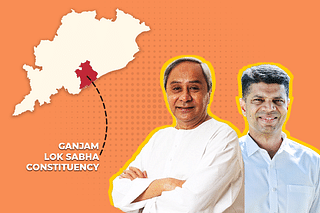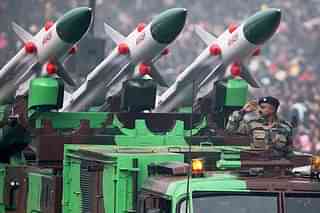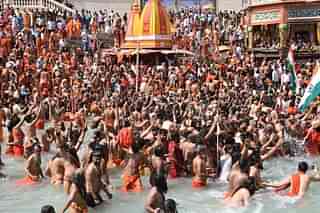Society
Ayodhya's 1934 Clash: The Untold Story of En Masse Fines On Hindu Families After Cow Slaughter Triggered Babri Mosque Attack
Swati Goel Sharma
Dec 18, 2023, 06:20 PM | Updated Dec 21, 2023, 11:40 AM IST
Save & read from anywhere!
Bookmark stories for easy access on any device or the Swarajya app.
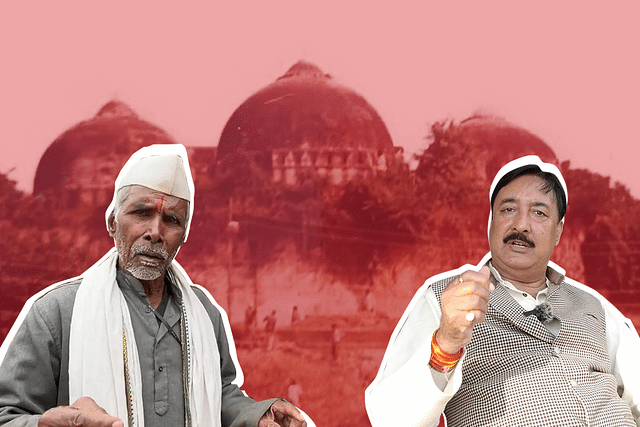
Sheetla Prasad Pandey, 49, carries with him a trove of stories around the Ramjanmabhoomi-Babri Masjid dispute from the era preceding India's partition.
These are tales passed down by his grandfather.
Pandey resides in Ayodhya’s Panji Tola mohalla, which is also the residence of late Hashim Ansari, the key litigant in the dispute who in 1961 filed a suit in the civil court of Faizabad against "illegal encroachment of the masjid by Hindu side."
The Supreme Court verdict in 2019 upheld the Hindu claim of ownership of the site, traditionally believed to be the birthplace of Lord Ram, noting that the mosque was not built on vacant land and there was a structure beneath it that was "not of Islamic origin."
Pandey says his grandfather and Ansari were friends and went to the same madrassa to study. He clarifies, “In those days, many Hindus attended madrassas. There were no other schools.”
One particular story from 1934 has left a lasting impact on Pandey as it pushed his family into poverty. That year, Ayodhya was rocked by riots, leading to the partial demolition of the Babri mosque.
The incident, believed to have been triggered by the slaughter of a cow on Bakrid in nearby Shahjahanpur, is documented in British records, as referenced in Meenakshi Jain's The Battle for Rama (2017).
As per the version provided by the then Commissioner of Fyzabad (now Faizabad) to the chief secretary in the Government of the United Provinces, a cow was slaughtered in the vicinity of Shahjahanpur on 27 March 1934 - the day of Bakrid. Shahjahanpur had no earlier record of cow slaughter on the occasion.
In reaction, a large crowd of ‘Bairagis’ attacked the Babri mosque that was located “in a more or less isolated position well away from the main road”. When the deputy collector heard of the incident, he went there with his force of five policemen and saw 200 Bairagis demolishing the mosque.
Bairagis are monks belonging to the Ramanandi sect of Vaishnav Sampradaya that emphasise the worship of Lord Vishnu and his incarnations, along with Lord Ram, his wife Sita and his friend Hanuman. Their numbers add up to tens of thousands in Ayodhya today.
The Deputy Collector’s report said: “The Bairagis have done very considerable damage to the mosque. The gateway has been demolished almost entirely. Fitments inside have been burnt. The metal pinnaces on the tops of the three main domes have been removed, and on at least one of the domes substantial damage has been done to the masonry, also to subsidiary masonry work elsewhere.”
The government imposed a hefty fine of Rs 85,000 on the Hindu community to cover the damages. The chief secretary of the Government of the United Provinces informed the Home Department that the information that the damage would be paid for, had “given general satisfaction to Muslim visitors there”.
In some other narratives, such as that provided in The Disputed Mosque: A Historical Inquiry (1990), the Bairagis seized control of the Babri mosque and destroyed the domes within two hours. The mosque was spared from further destruction only upon the police’s arrival.
The book says the fine imposed on Hindus was Rs 125,000.
Pandey's grandfather conveyed to him a slightly different story. According to him, a large group of Naga sadhus were in Ayodhya for a holy dip in the River Sarayu during an auspicious period. When they reached the Ram temple site after bathing, they were incensed to see namaz instead of ‘Ram naam’ chants.
They expressed their dismay to local Hindus. The latter spoke of difficulties they were facing in even maintaining a hard-won chabutra (platform) in front of the mosque constructed for offerings. Enraged, the sadhus launched an attack on the mosque.
The Naga sadhus soon departed the town, but the incident had lasting repercussions. Many Hindu residents of Ayodhya were subsequently accused of participating in the violence by the local Muslim community.
Pandey’s grandfather was made to pay Rs 51, a considerable amount at the time. He contextualises this, stating, "One rupee in those days would be equivalent to Rs 11,000 today."
Every impacted family was obligated to pay a minimum of Rs 11. Pandey recalls his grandfather’s words, "At least one member from almost every Hindu household was imprisoned, released only after the payment of the fine."
Another resident, 75-year-old Nanku Ram Nishad, recalls his father mentioning the fine to him. “It was Rs 21 for us,” he says. “My father could not pay up the amount upfront. He paid it in installments over many years. He made only two anna after a hard day’s work.”
Nishad, who runs a cycle-repairing workshop, says there was no way to escape the fine. “The British officers were very strict. My father says residents would shiver if an armed officer passed by.”
Shakti Singh, a businessman and a leader of the Bharatiya Janata Party (BJP), says many residents offered themselves for severe punishment in lieu of the fine if they could not afford to pay.
“My grandfather mentioned it. Many residents went to the police, asking to be punished instead," says Singh, who is the grandson of Thakur Gurudutt Singh, a revered figure in Ayodhya for his role in the “appearance” of Ram Lalla murti under the central dome of Babri mosque in 1949.
Thakur Gurudutt Singh was Faizabad city magistrate that time.
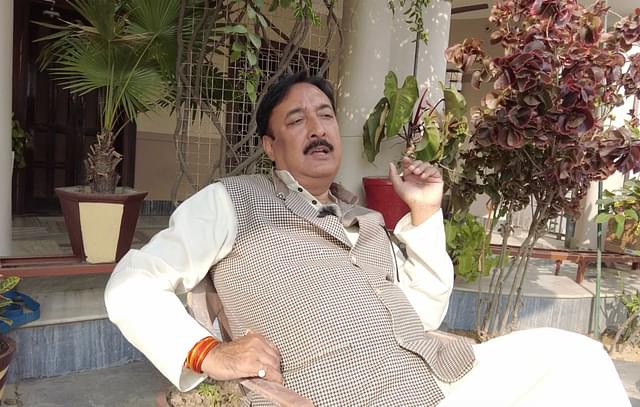
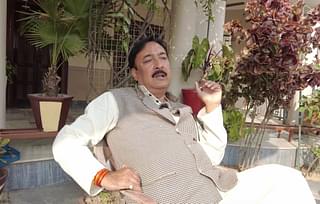
Pandey says the fines were collected by a woman from a royal family, with the intention of facilitating the release of the imprisoned.
"The fine was hard on us," he says. "At that time, Ayodhya was already struggling with poverty as our limited financial resources were largely consumed by British taxes."
To furnish the bail amount, which was then considered relatively affluent, numerous families, including his own, had to sell essential belongings such as utensils.
Pandey works as a purohit, a profession his father and grandfather too pursued but which brought in more money in the past. Unlike his father, Pandey isn’t attached to a specific temple but offers his services on demand.
Asked if his grandfather criticised the act of demolition of the mosque, Pandey laughs. “Do you know that regular namaz stopped at the mosque after that?”
Several records claim that regular namaz became a thing of the past at Babri mosque that pivotal year.
A 1950 plea filed in the Faizabad civil court by a prominent resident, Gopal Singh Visharad, seeking the right to worship the Ram Lalla murti that had “appeared” a year earlier, argued that the Muslim claim on the mosque ended in 1934 as no prayers were offered after that year.
Similarly, a plea filed in 1959 by Nirmohi Akhara through Mahant Jagat Das, seeking to get the management and charge of the Janmabhoomi temple, said that “no Mohammedan has been allowed to enter the temple building since 1934”.
A 1948 report related to the Babri mosque filed by the Inspector of Waqf, Muhammad Ibrahim, noted that no one went to the mosque for namaz in the mornings. He blamed it on “the fear of Hindus and Sikhs”.
He wrote, “If by any chance any passenger stays in the Masjid, he is being put in trouble by the Hindus. Out of the Sahan of Masjid, there is a temple where many Pandas reside and they harass the Muslims whomsoever visit inside the mosque.” In another report, filed only a week later, Ibrahim said that “there is always a lock on the Masjid. There is no namaz or ajan at any time.”
He further wrote that at the time of Shube namaz, surrounding houses threw stones towards the namazis.
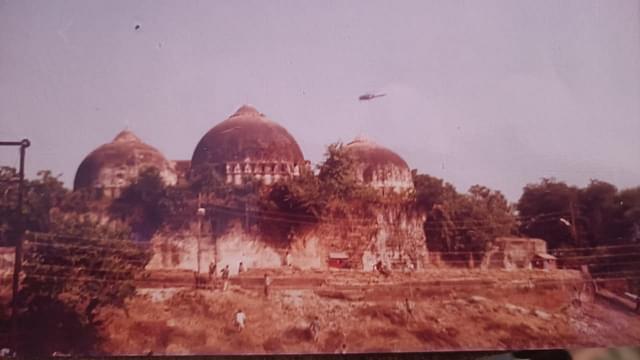
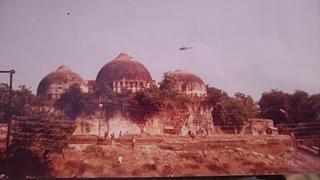
Months before he was “sacked” from the case in December 2019, senior advocate of the Supreme Court Rajeev Dhawan, representing the Muslim side, told the court, “Hindus say they (Muslims) didn’t pray there after 1934… and virtue is made out of that… It’s because you didn’t let them pray.”
During court hearings, the 1934 violence was cited by the Muslim side to say that three crucial inscriptions from Babar’s time in Persian, placed at the entrance and the pulpit of the mosque, naming the ruler as Babur and giving the year of construction of the mosque as 1528, were destroyed by the rioters.
Readers may note that contrary to this claim, the reason and time of the disappearance of the inscriptions is shrouded in mystery. The inscriptions, while naming Babar, mentioned that the site was Ramjanmabhoomi.
As referenced in Meenakshi Jain’s book, the Annual Report of The Office of the Archaeological Surveyor, Northern Region, Agra, submitted by Maulvi Shuaib in 1906, stated, “Records the erection of the mosque which was built on the same spot where the old temple of Janam Asthanam of Ram Chandra was.”
Residents of Ayodhya say, and British records confirm, that the 1934 incident was part of a recurring pattern of communal conflicts in Ayodhya over Ramjanmabhoomi. Even if the trigger was cow slaughter, Janmabhoomi's occupation was always reported to be the underlying reason.
For instance, when riots broke out in Ayodhya over cow slaughter on Bakrid on 20 and 21 November 1912, the chief secretary in the Government of the United Provinces wrote to the Government of India: “One perpetual cause of friction was the existence of a mosque on the traditional site of Ram’s birthplace. This was constructed in 1528 by the Emperor Babar who destroyed the ancient temple and used its materials for the new building.”
Today, residents acknowledge their limited knowledge of specific details regarding past episodes of violence. However, they are aware that Ayodhya has struggled to maintain prolonged peace since the mosque was built over the pre-existing Ram temple.
With the 2019 Supreme Court verdict resolving the centuries-old dispute, there is a newfound hope among the residents for a lasting peace.
Save & read from anywhere!
Bookmark stories for easy access on any device or the Swarajya app.
Swati Goel Sharma is a senior editor at Swarajya. She tweets at @swati_gs.
Support Swarajya's 50 Ground Reports Project & Sponsor A Story
Every general election Swarajya does a 50 ground reports project.
Aimed only at serious readers and those who appreciate the nuances of political undercurrents, the project provides a sense of India's electoral landscape. As you know, these reports are produced after considerable investment of travel, time and effort on the ground.
This time too we've kicked off the project in style and have covered over 30 constituencies already. If you're someone who appreciates such work and have enjoyed our coverage please consider sponsoring a ground report for just Rs 2999 to Rs 19,999 - it goes a long way in helping us produce more quality reportage.
You can also back this project by becoming a subscriber for as little as Rs 999 - so do click on this links and choose a plan that suits you and back us.
Click below to contribute.

